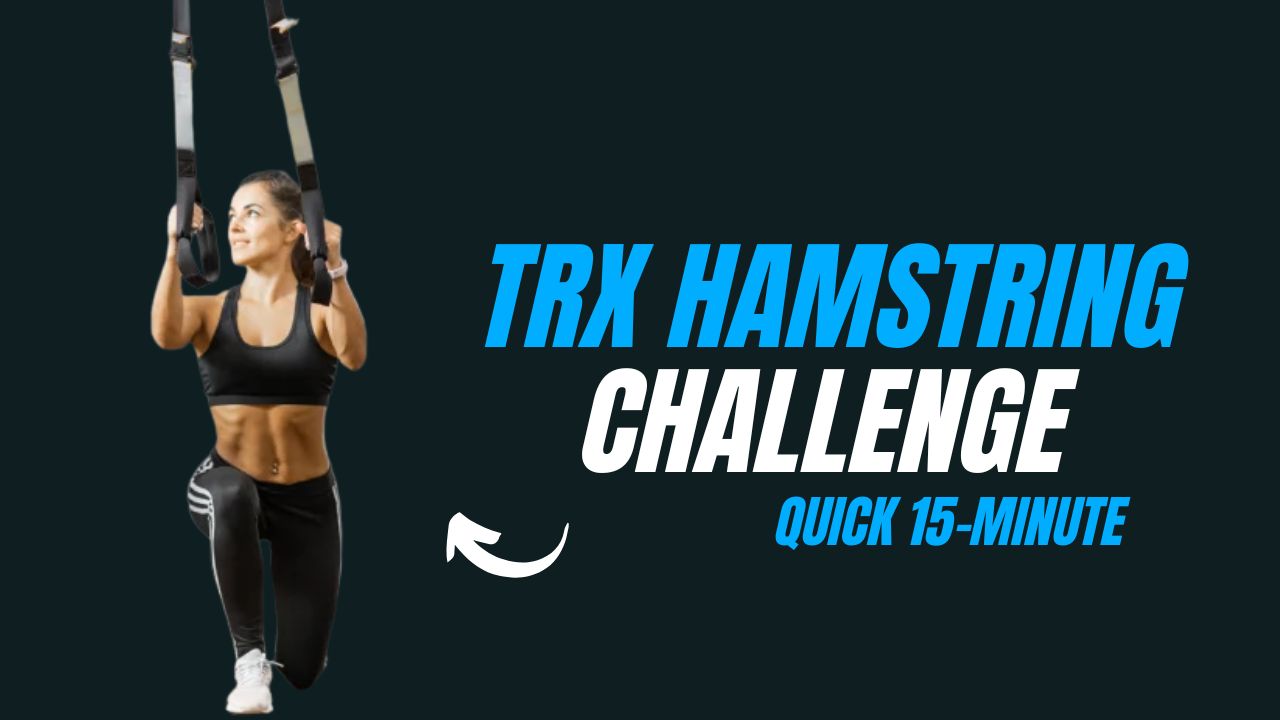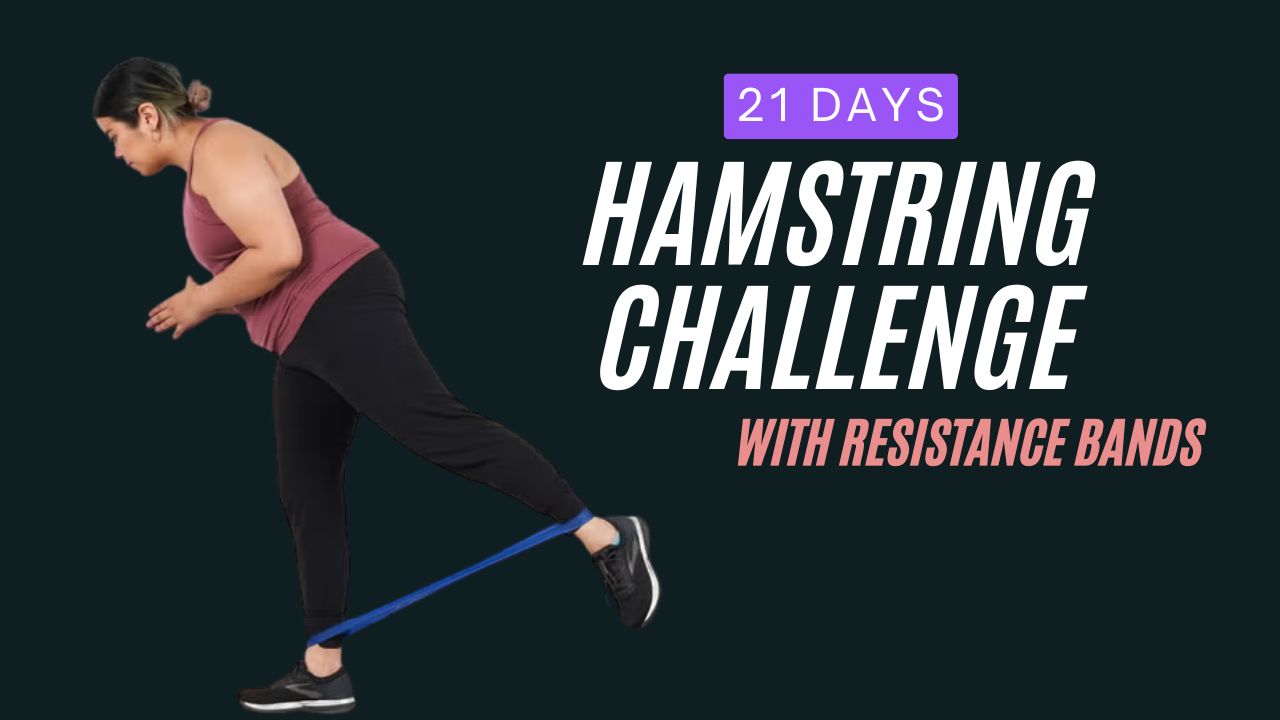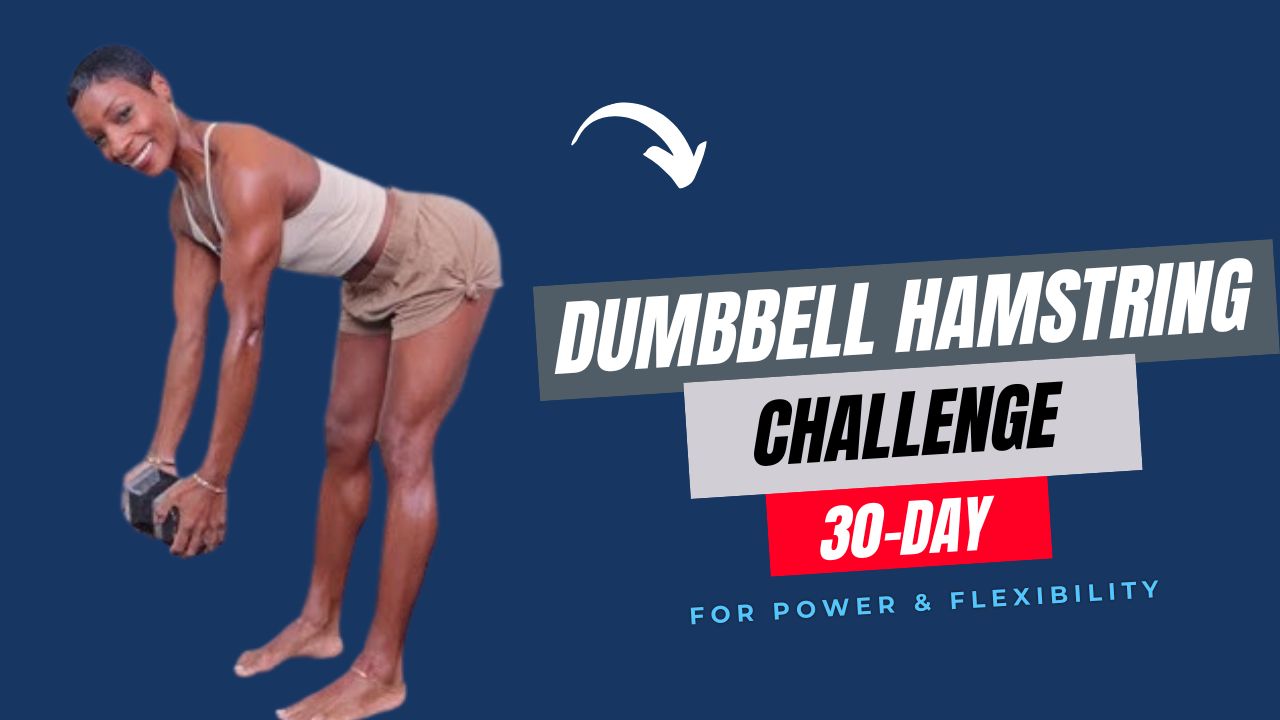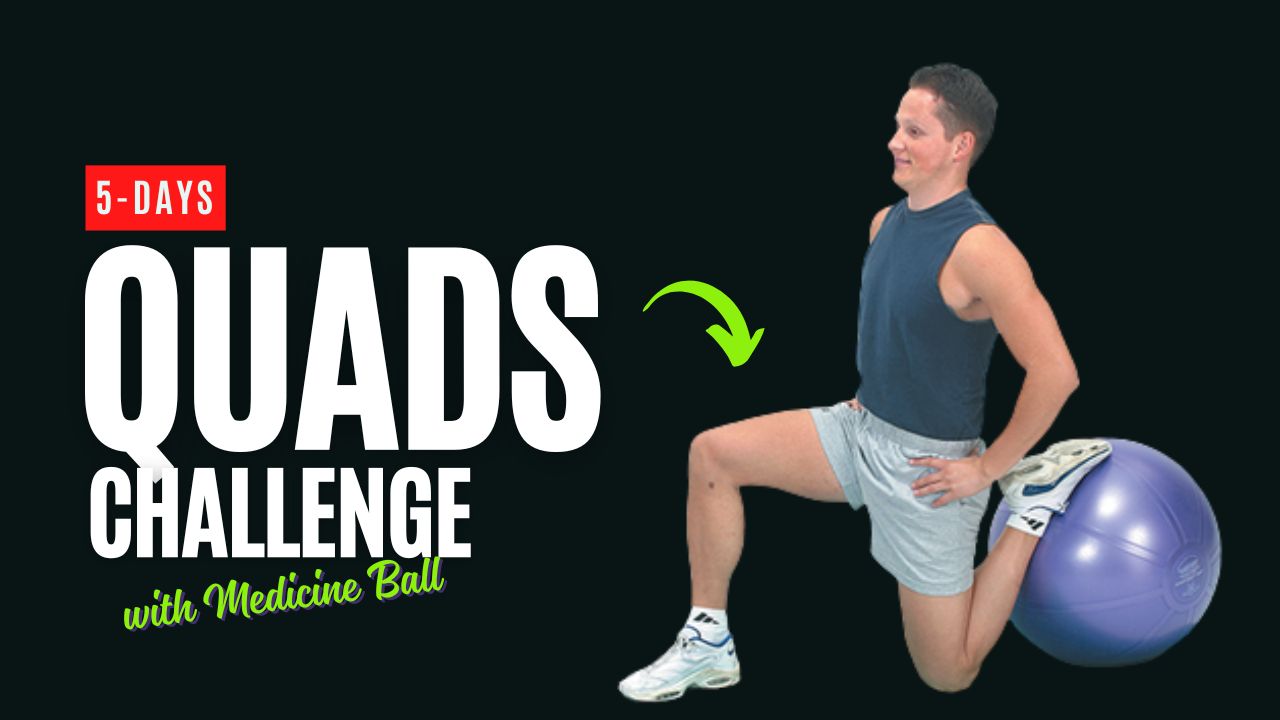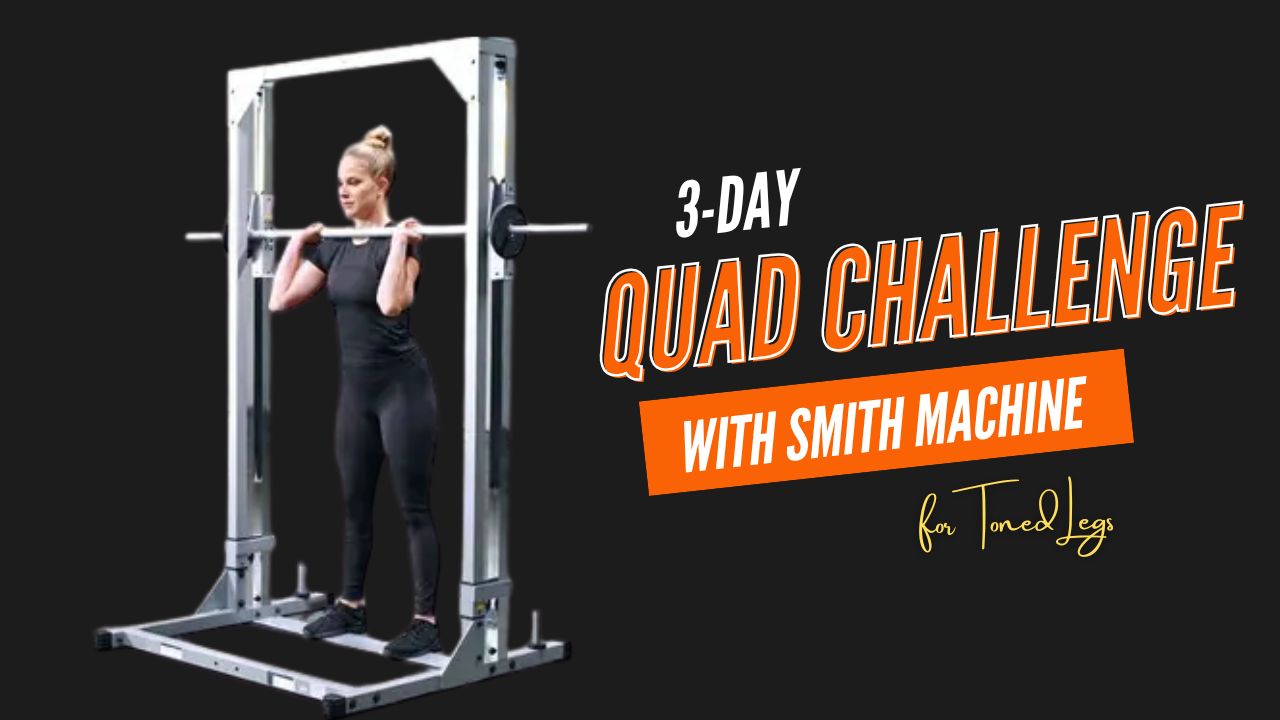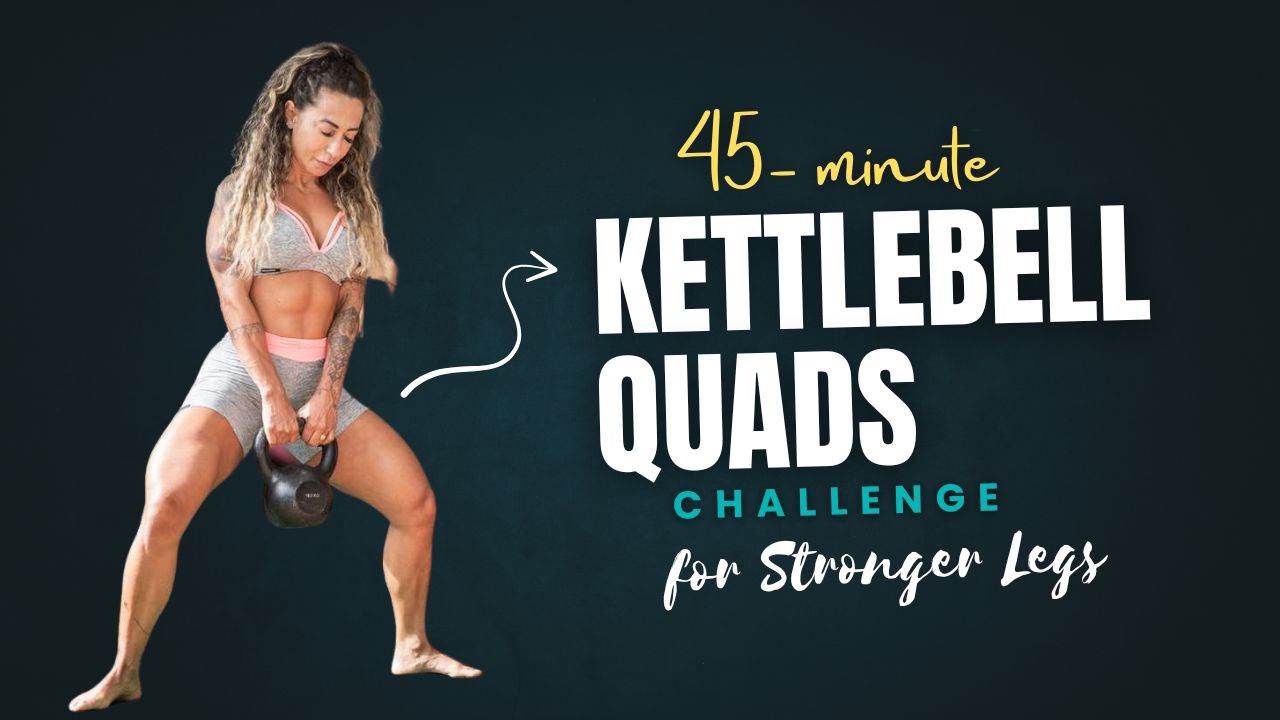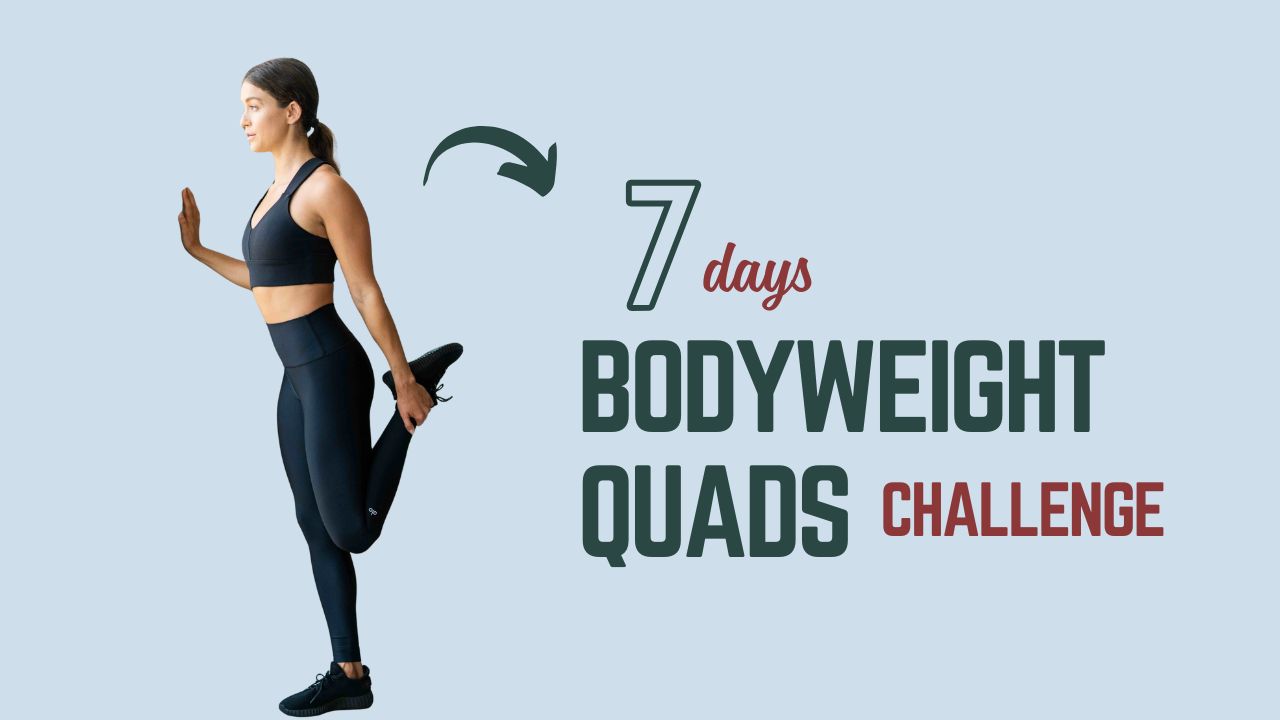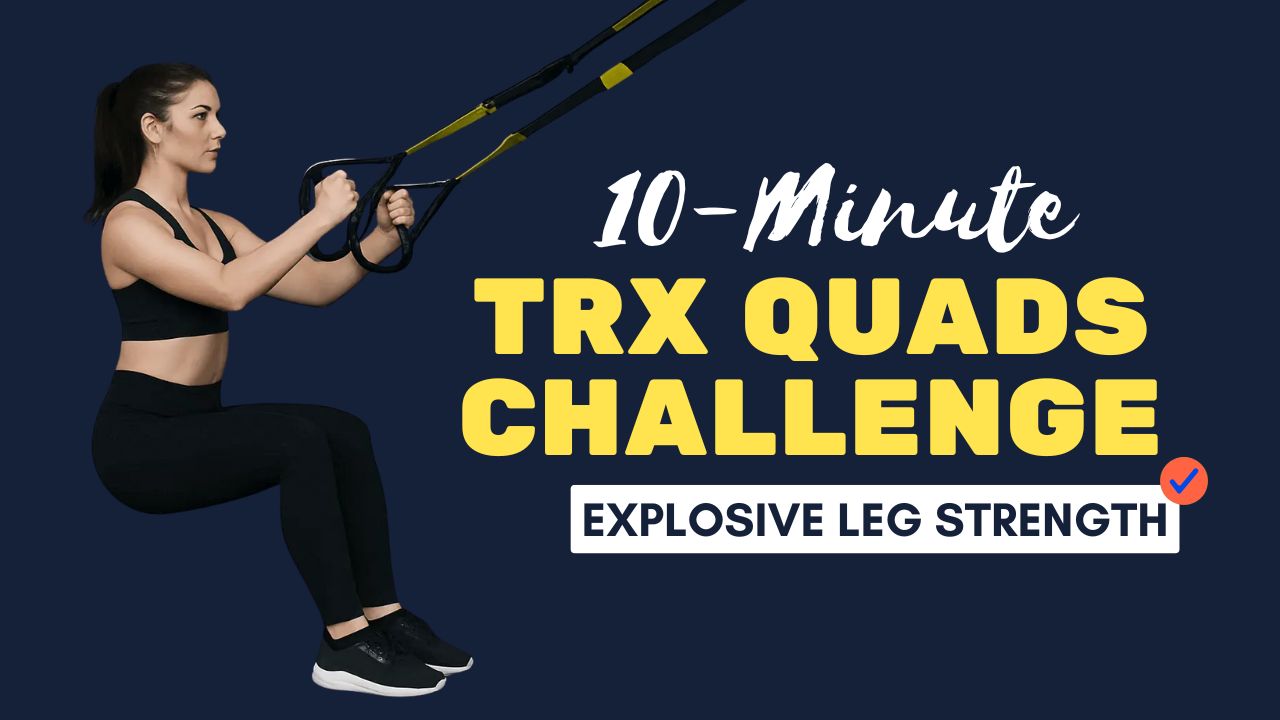Hamstrings are more than just the muscles at the back of your thighs—they’re essential for explosive power, speed, posture, and injury prevention.
Yet, despite their importance, they are often the most neglected muscle group in traditional workouts. Do you know that weak hamstrings can increase your risk of knee injuries and lower back strain?
This 30-day dumbbell hamstring challenge is designed to transform your lower body strength, improve flexibility, and enhance your overall athletic performance.
Whether you are a beginner, a weekend warrior, or a professional athlete, this challenge will help you target every part of your hamstrings, using nothing more than a set of dumbbells. Let’s break down the exercises, how to perform them safely, and the 30-day routine that will keep you on track.

Table of Contents
What Can Happen After 30 Days of This Exercise
| Physical Benefit | Performance Benefit | Lifestyle & Health Benefit |
|---|---|---|
| Increased hamstring strength and muscle tone | Improved lower body power for running, jumping, and athletic movements | Reduced risk of lower back and knee injuries |
| Enhanced hamstring flexibility and range of motion | Better balance and coordination | Easier daily movements such as bending, lifting, and climbing stairs |
| Stronger glutes and posterior chain | Increased endurance for leg workouts | Boosted metabolism and calorie burn |
| Improved hip hinge mechanics | Enhanced performance in sports and recreational activities | Greater confidence in body strength and mobility |
| Reduced muscle imbalances between legs | More efficient movement patterns | Improved posture and reduced lower body discomfort |
| Decreased soreness from physical activity | Increased stability during exercises | Motivation to continue strength and flexibility training |
Do’s and Don’ts for the 30-Day Dumbbell Hamstring Challenge
| Do’s | Don’ts |
|---|---|
| Warm up before every workout to prepare muscles and joints | Skip warm-ups, which increases injury risk |
| Focus on proper form rather than lifting heavy weights | Use weights that are too heavy and compromise technique |
| Gradually increase dumbbell weight over time | Rush progression without building strength |
| Keep a slight bend in the knees during hamstring exercises | Lock your knees completely during deadlifts or swings |
| Stretch hamstrings and glutes after each session | Ignore post-workout stretching, leading to tightness |
| Engage core muscles during exercises for stability | Arch or round your back while lifting |
| Rest for 1 day per week to allow recovery | Train hamstrings every day without rest |
| Maintain slow, controlled movements for maximum activation | Perform fast, jerky reps that reduce effectiveness |
| Track your progress and note improvements | Ignore results and continue without adjusting intensity |
| Listen to your body and modify exercises if needed | Push through sharp pain or discomfort |
Exercises To Do For Dumbbell Hamstring Challenge
1. Romanian Deadlift (RDL)
Description:
The Romanian Deadlift is one of the best exercises for building hamstring strength and length. It targets both the hamstrings and glutes while also engaging your lower back for stability.
How to:
- Stand with your feet hip-width apart, holding a dumbbell in each hand in front of your thighs.
- Keep a slight bend in your knees and hinge at your hips, lowering the dumbbells along the front of your legs.
- Lower until you feel a stretch in your hamstrings—usually just below the knees.
- Keep your back flat and shoulders pulled back.
- Engage your hamstrings and glutes to return to the starting position.
Tip: Avoid rounding your back, which can lead to injury. Focus on slow, controlled movements.
2. Dumbbell Hamstring Curl on Stability Ball
Description:
This exercise emphasizes hamstring isolation and improves flexibility. It also enhances knee joint stability.
How to:
- Lie on your back with your heels on a stability ball and hold dumbbells on your hips for added resistance.
- Lift your hips off the ground to form a straight line from your shoulders to your knees.
- Curl the ball toward your glutes by bending your knees.
- Slowly extend your legs back to the starting position while keeping your hips lifted.
Tip: Maintain tension in your hamstrings throughout the movement for maximum activation.
3. Dumbbell Step-Ups with Hamstring Focus
Description:
Step-ups are great for functional strength. By leaning slightly forward and focusing on the push from your heel, you can recruit your hamstrings more effectively.
How to:
- Stand in front of a bench or sturdy platform, holding a dumbbell in each hand.
- Step onto the platform with your right foot, pushing through your heel to lift your body up.
- Slowly lower back to the starting position.
- Repeat on the left side.
Tip: Keep your torso slightly forward to engage hamstrings over quads.
4. Single-Leg Dumbbell Deadlift
Description:
This unilateral exercise improves balance, coordination, and hamstring symmetry while also challenging your core.
How to:
- Hold a dumbbell in your right hand and stand on your left leg.
- Keep a slight bend in your standing knee and hinge at the hips, lowering the dumbbell toward the ground while extending your free leg behind you.
- Return to the upright position, squeezing your hamstrings and glutes at the top.
- Repeat on the opposite leg.
Tip: Focus on control rather than heavy weights to avoid tipping over.
5. Dumbbell Glute Bridge with Hamstring Emphasis
Description:
While glute bridges primarily target glutes, adding dumbbells and emphasizing hamstring engagement enhances posterior chain development.
How to:
- Lie on your back with knees bent and feet flat on the floor, holding a dumbbell over your pelvis.
- Press through your heels to lift your hips toward the ceiling.
- At the top, contract your glutes and hamstrings.
- Lower slowly back down.
Tip: Do not hyperextend your lower back; lift only until your hips form a straight line with your shoulders.
6. Dumbbell Good Mornings
Description:
Good Mornings are excellent for hamstring flexibility and strength while also targeting your lower back.
How to:
- Stand with your feet shoulder-width apart, holding a dumbbell across your shoulders.
- Keep a slight bend in your knees and hinge at the hips to lower your torso until it is nearly parallel to the floor.
- Slowly return to the starting position by contracting your hamstrings and glutes.
Tip: Keep your neck neutral and core tight to prevent strain.
7. Dumbbell Swing (Hamstring Version)
Description:
This is a modified kettlebell swing using dumbbells, focusing on hip hinge and hamstring activation.
How to:
- Hold a single dumbbell with both hands in front of you.
- Hinge at the hips and swing the dumbbell backward between your legs.
- Thrust your hips forward to swing the dumbbell up to chest level.
- Let the momentum guide the movement, keeping your core engaged.
Tip: Avoid using your arms to lift; the power should come from your hip drive.
8. Stiff-Legged Dumbbell Deadlift
Description:
This is similar to Romanian Deadlifts but emphasizes maximum hamstring stretch with straighter legs.
How to:
- Stand with feet shoulder-width apart and dumbbells in front of your thighs.
- Keep knees slightly bent and hinge at the hips, lowering dumbbells toward your toes.
- Maintain a flat back and feel the stretch in your hamstrings.
- Return to standing, squeezing hamstrings at the top.
Tip: Do not lock knees completely; this reduces hamstring engagement.
9. Dumbbell Lunge to Knee Lift
Description:
Combines hamstring engagement with balance and coordination. Great for functional fitness.
How to:
- Hold a dumbbell in each hand. Step forward into a lunge, keeping the front knee over the ankle.
- Push through your front heel to rise, then lift the rear knee toward your chest.
- Return to start and alternate legs.
Tip: Focus on slow, controlled movements to maximize hamstring activation.
10. Dumbbell Sumo Deadlift
Description:
Targets hamstrings, inner thighs, and glutes. The wide stance shifts the emphasis more toward the hamstrings.
How to:
- Stand with feet wider than shoulder-width and toes slightly outward.
- Hold a dumbbell with both hands between your legs.
- Hinge at the hips to lower the dumbbell while keeping your back straight.
- Drive through your heels to return to standing.
Tip: Keep your chest up and avoid rounding the spine.
30-Day Dumbbell Hamstring Challenge Routine
| Day | Exercises | Notes |
|---|---|---|
| 1-3 | Romanian Deadlift, Dumbbell Hamstring Curl, Step-Ups | Light weight, focus on proper form |
| 4-6 | Glute Bridge, Dumbbell Good Morning, Dumbbell Swing | Moderate weight, controlled tempo |
| 7-9 | Romanian Deadlift, Step-Ups, Dumbbell Lunge to Knee Lift | Slightly heavier weight, maintain form |
| 10-12 | Dumbbell Hamstring Curl, Single-Leg Deadlift, Glute Bridge | Focus on slow, controlled reps |
| 13-15 | Stiff-Legged Deadlift, Dumbbell Good Morning, Step-Ups | Add 1 extra set per exercise |
| 16-18 | Romanian Deadlift, Dumbbell Hamstring Curl, Single-Leg Deadlift | Moderate-high weight, full range of motion |
| 19-21 | Glute Bridge, Dumbbell Swing, Dumbbell Good Morning | Maintain full range of motion |
| 22-24 | Stiff-Legged Deadlift, Dumbbell Lunge to Knee Lift, Single-Leg Deadlift | Focus on contraction and control |
| 25-27 | Romanian Deadlift, Dumbbell Swing, Glute Bridge | Slightly increase dumbbell weight |
| 28-30 | Step-Ups, Dumbbell Sumo Deadlift, Stiff-Legged Deadlift | Finish strong, max reps with proper form |
Conclusion & Next Steps
Completing this 30-Day Dumbbell Hamstring Challenge is just the beginning of building stronger, more flexible hamstrings. By following the exercises consistently, you’ve improved your lower body strength, enhanced flexibility, and reduced the risk of injury.
Remember, hamstrings are key not only for athletic performance but also for everyday movements like running, jumping, and bending.
If you want to continue seeing progress after this 30-day challenge, consider these options:
- Increase Dumbbell Weight: Gradually add more weight to each exercise to maintain progressive overload.
- Extend the Duration: Turn it into a 60-day or 90-day challenge, alternating intensity and volume.
- Combine with Cardio or Plyometrics: Add hamstring-focused sprints, jump squats, or box jumps for explosive power.
- Incorporate Resistance Bands: Mix dumbbells with bands for added tension and variety.
- Focus on Mobility & Stretching: Spend extra time on hamstring and hip stretches to further enhance flexibility.
Consistency and progression are key. Keep challenging yourself, track your improvements, and set new goals for stronger, more resilient hamstrings.
Frequently Asked Questions (FAQs)
Do I need any special equipment for this challenge?
No, you only need a set of dumbbells. A stability ball is optional for some exercises like hamstring curls.
Can beginners follow this challenge?
Yes, beginners can start with lighter weights and fewer sets. Focus on proper form before increasing intensity.
How often should I do this challenge?
The challenge is designed for 6 days per week with 1 rest day. Rest days are important for recovery.
Can I do this challenge at home?
Absolutely! All exercises require minimal equipment and can be performed at home.
How long is each workout session?
Each session takes approximately 40–50 minutes, including warm-up and cool-down.
What if I feel hamstring soreness?
Mild soreness is normal, especially in the first week. Stretching, foam rolling, and proper rest can help.
Can I combine this with cardio or other workouts?
Yes, you can combine it with cardio or full-body workouts, but avoid overtraining your hamstrings to prevent injury.
How will I know if I’m making progress?
Progress can be measured by increased strength, flexibility, better balance, and the ability to lift heavier dumbbells or complete more reps with good form.
Can women do this challenge too?
Absolutely! The challenge is effective for both men and women, and weights can be adjusted according to strength level.
